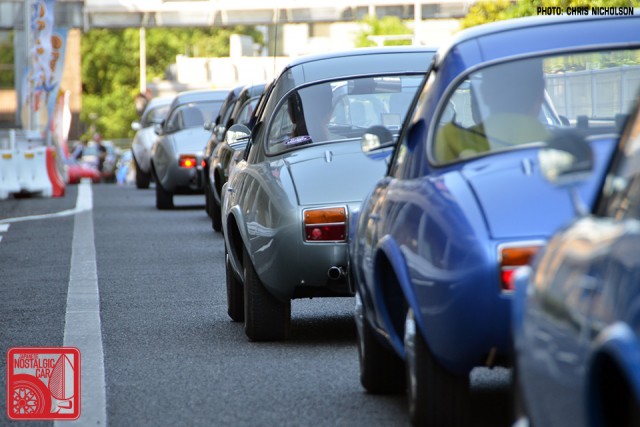
When we last met, dear reader, I told you of my adventures traveling to Nagoya for the 50th anniversary celebration of the Toyota Sports 800, an adorable little car known to many of us as the Yotahachi. That day included a car show at the Toyota Automobuile Museum in Aichi Prefecture where I met many fellow enthusiasts and owners and men responsible for the development of the car. We capped it off with a road trip in a Yotahachi through central Japan’s scenic mountains to Tokyo, where day two of celebration would begin at Toyota’s MegaWeb showroom.
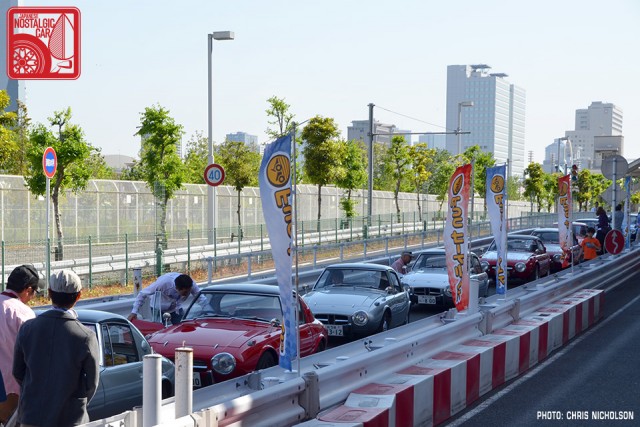
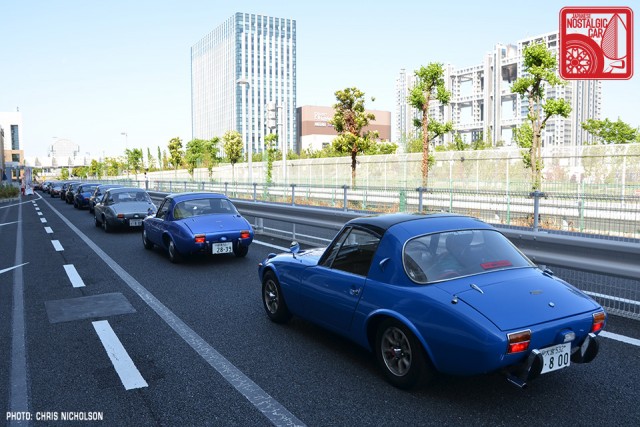
After a visit to a Tokyo onsen and an evening of dining and celebrations, Japanese style, the next morning started early. Crawling out of my wooden capsule “room” at seven in the morning, I showered and shaved in traditional Japanese style, which for the sake of dignity, I’ll refrain from describing in detail. If you’ve been to a public onsen, you know what I mean. If you haven’t, try it sometime, if only to tell your friends back home that you did.
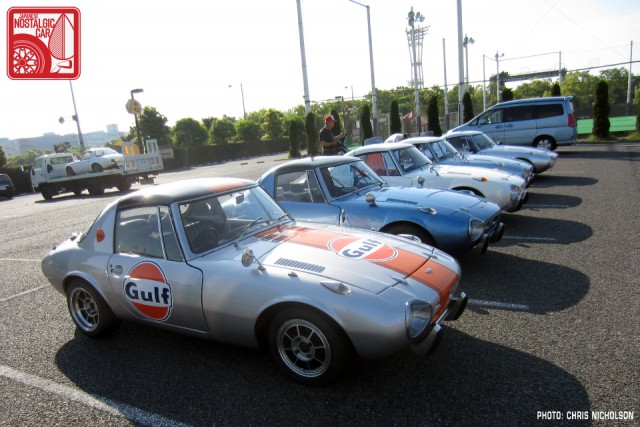
What happens at the onsen stays at the onsen (photos are not allowed inside), and all is forgotten when one walks out into a cool Tokyo morning greeted by a row of Sports 800s gleaming under the rising sun. This was going to be another fantastic day.


Sugiyama-san gave me a lift for the short drive to Toyota’s Mega Web. The mini parade of Yotahachi flat-twins sounded so good in the morning air.
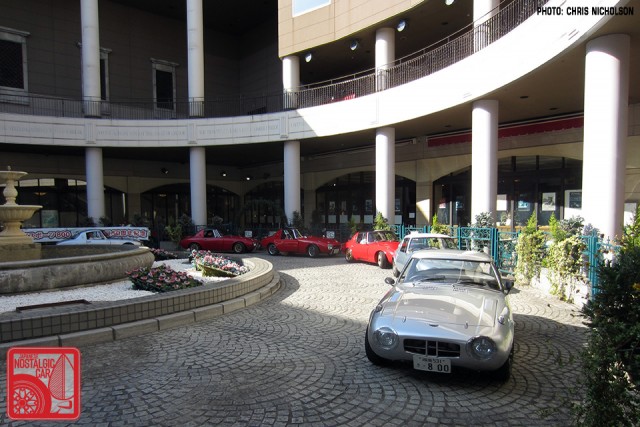
Once at Mega Web, we circled the wagons in the courtyard near the gift shop and cafe. The silver car in front bleongs to Sugiyama-san. Later in the day, I posed with the car for an official event photograph and drove it to its display spot.
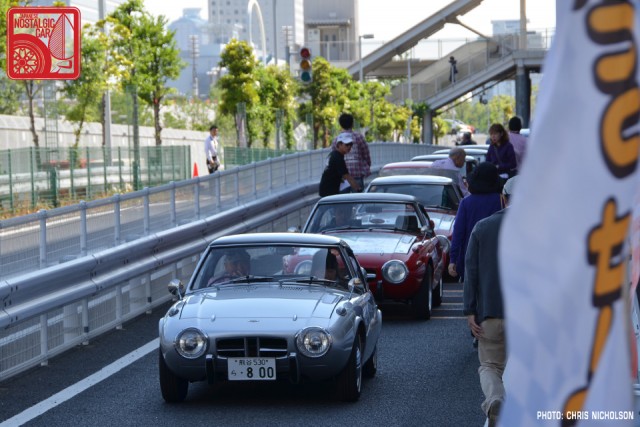
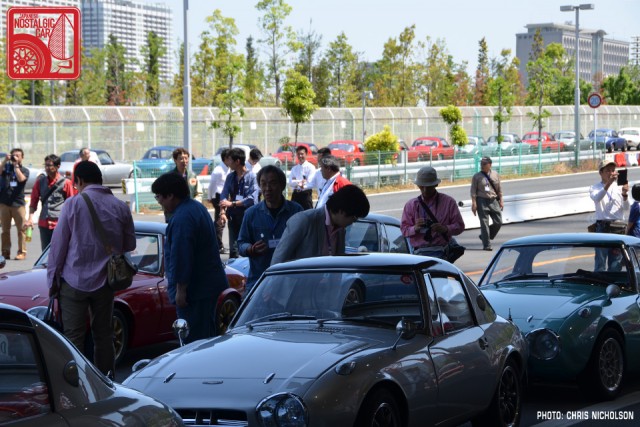
Once owners started pulling in for registration, they didn’t stop. For over two hours, there was a steady stream of beautiful Sports 800s in a wide variety of colors and personalization.
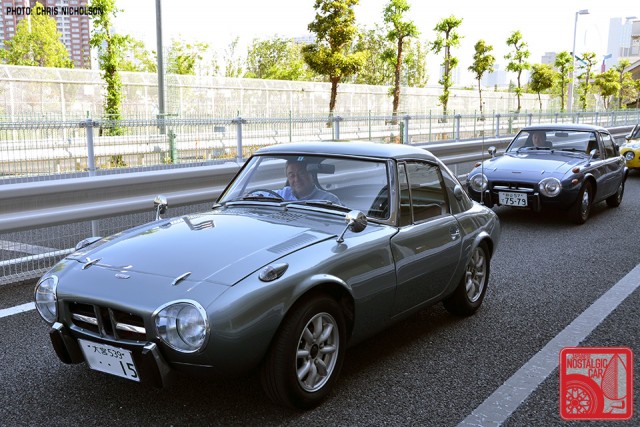
No one minded, of course. This gentleman’s jovial expression summed up the mood that morning.
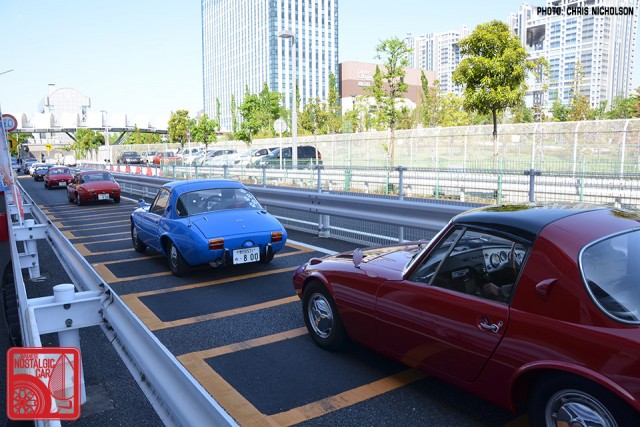
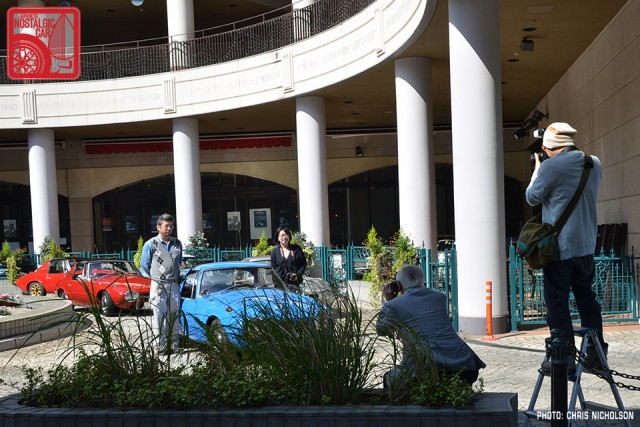
Upon receiving the registration paperwork, drivers pulled around the fountain to have their picture taken with their car. After that, they drove off to be guided to a parking space.
Watanabe-san, who had given me a ride from Nagoya the day before with his red ’68 Yotahachi, arrived that morning with his other one, a blue ’65 model.
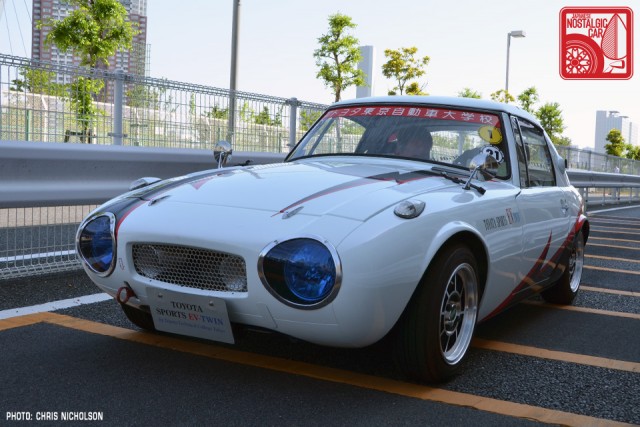


All morning, the thrum of flat-twin Toyota engines surrounded us. But this mysterious example crept in silently, for it had been converted to electric power. Interestingly, its new powerplant is still laid out in a similar configuration to the original air-cooled engine.
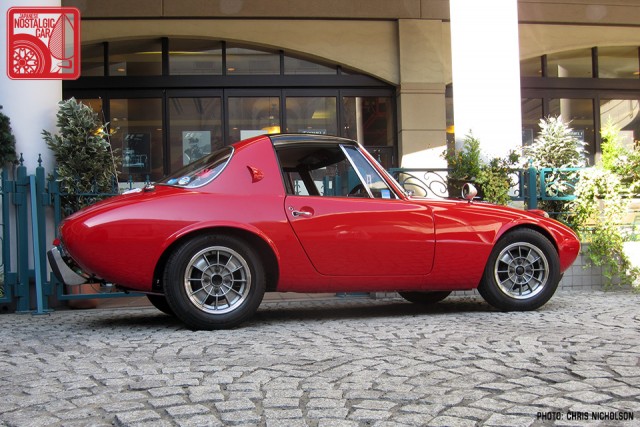


This restomod was a project that rivaled the previous day’s blue one, but retained a more stock appearance, at least externally. Modifications included (but were not limited to) heat shields for the carburetors, alternator conversion, air conditioning, many extra gauges, wood dash trim stolen from my old Jaguar, a radio from a Nissan Pao, front and rear sway bars, and extensive use of carbon fiber. The hood, interior door panels, and fuel tank were all made of the stuff, and probably a few other items. He even had an RC version of his car to play with when stuck indoors.
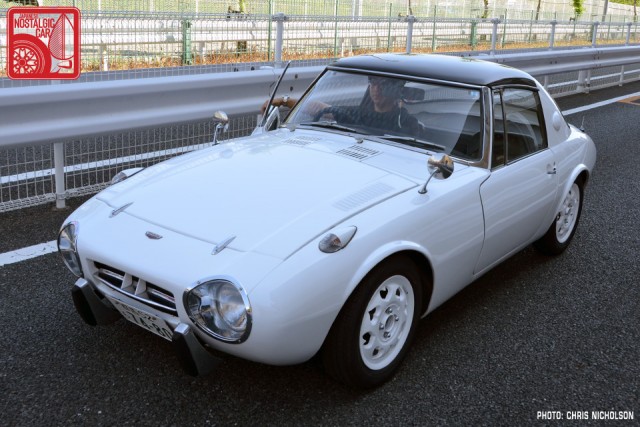
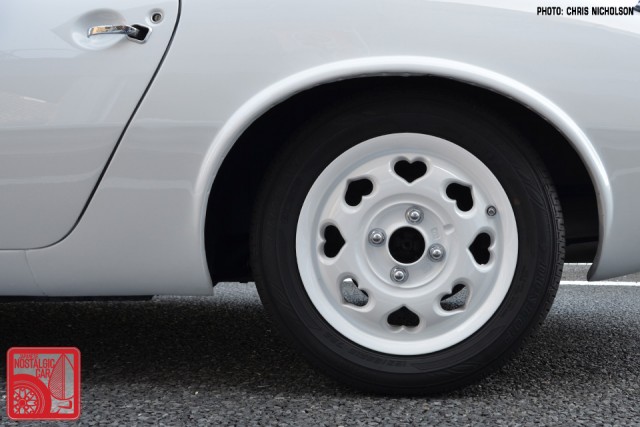
How do you make a Yotahachi even more adorable? A set of Swingheart wheels certainly helps. These are usually seen on kei vans, but they look right at home here.
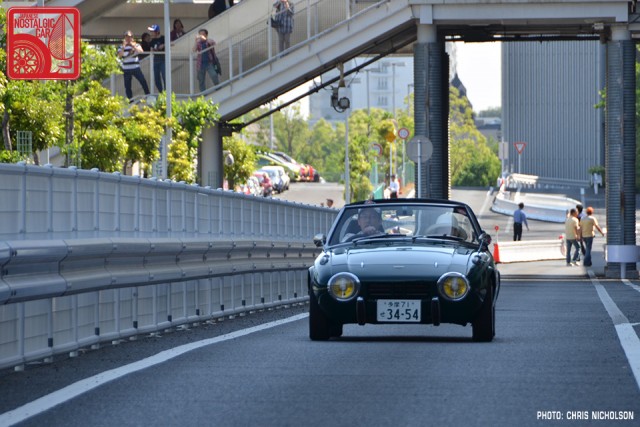
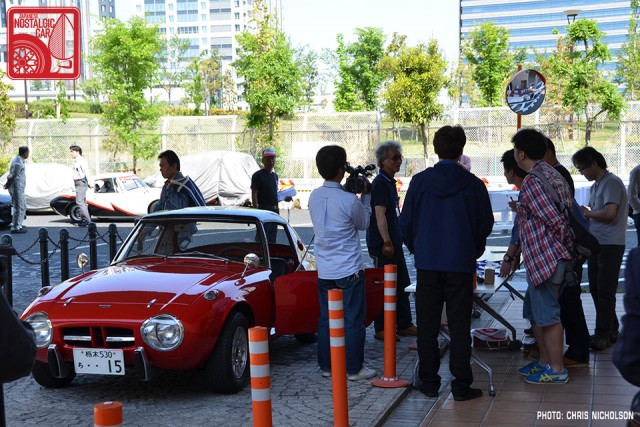
As the morning carried on the cars kept arriving, as did the media, and they focused right away on Makoto Dohi’s arrival in his US-market Yotahachi.
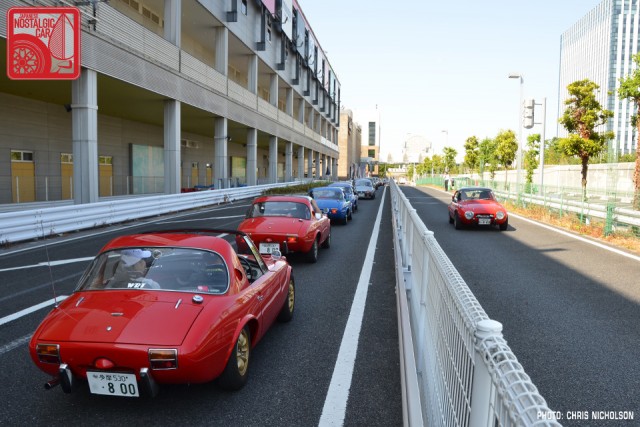
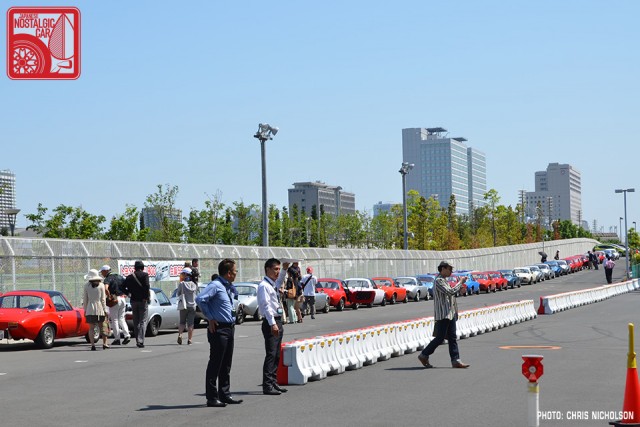
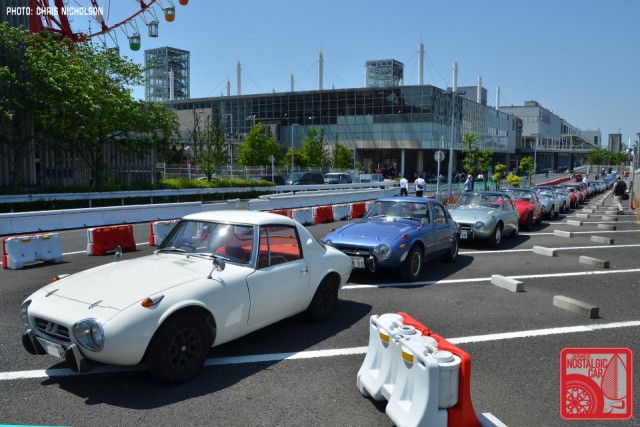
Where do you park one-third of the world’s surviving Sports 800s? Anywhere you can! Three main parking areas were set aside, and all were filled by the time registration closed. Several cars made the trip from the previous day’s event in Nagoya, but many were new arrivals. The senses were overwhelmed with color choices, modifications, and personal stories.
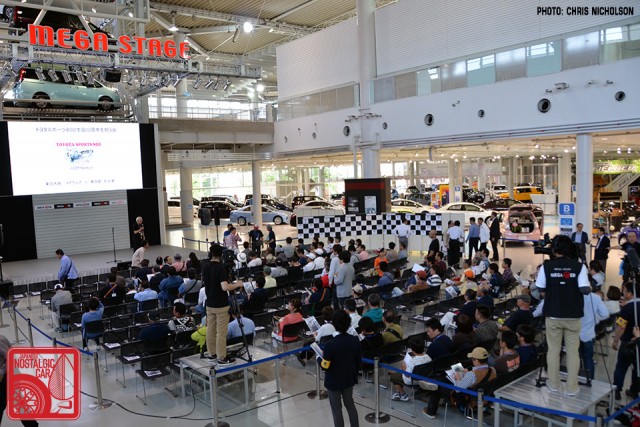
With registration closed, it was time to move inside for the ceremonies. The main stage (sorry, “Mega Stage”) was set up and soon all of the chairs would be filled, with a standing crowd filling the sides and back. Even the friends that I stay with in Adachi-ku came out to see this.
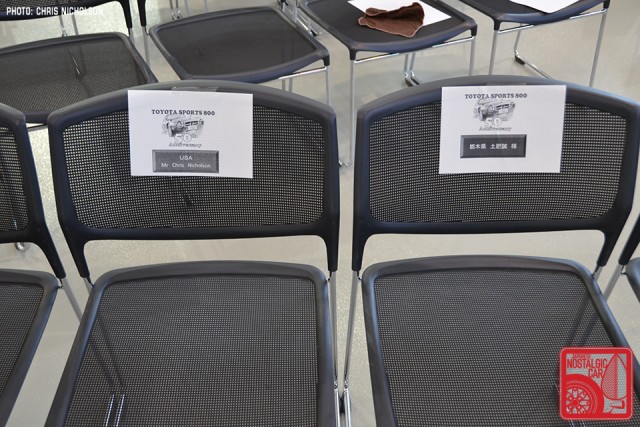
Along the front row, twenty seats were marked for special guests. Owners from clubs all over Japan took turns talking about their locals clubs and their own personal Sports 800s. Representing the US, I was in the last seat for the speakers, next to my friend Dohi-san.


Like the TAM Annex in Nagoya the day before, the conference area was lined with good wishes and congratulations from Sports 800 owners and industry executives all over Japan. One card even included an amazing hand-drawn cutaway illustration of a Yotahachi, along with wishes of good luck at the 70th and 100th anniversary events. I can promise you I’ll try to cover at least one of those for JNC.
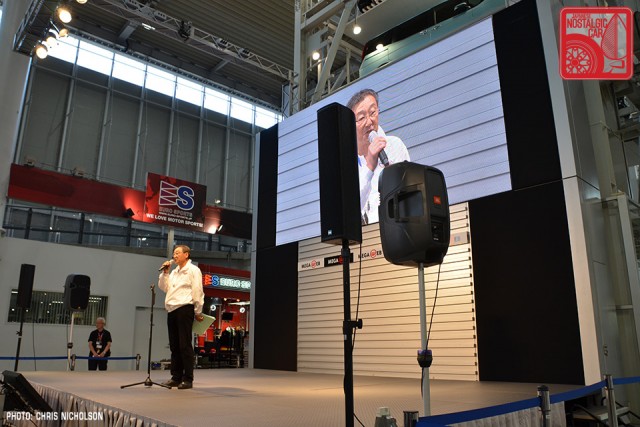
Event organizer Yasunari Sugiyama started off the ceremonies, and I listened to the other owners while trying to remember what I wanted to say (and how to say it in Japanese). Before I knew it, Dohi-san was telling the crowd about my visit to his shop in 2013, which meant my turn at the microphone was next. Fortunately, my first ever public speech in 日本語 went smooth (enough), and any potential international incidents were avoided.
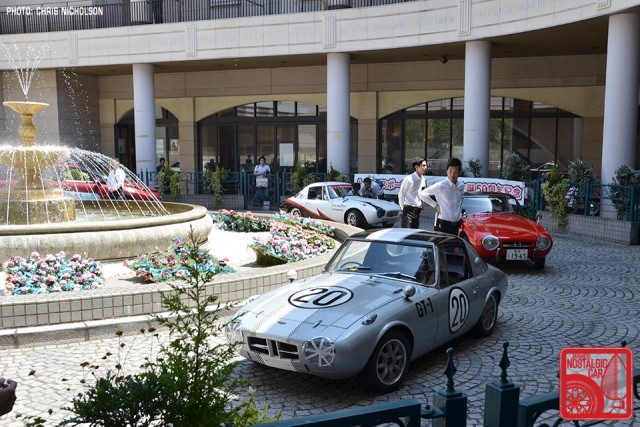
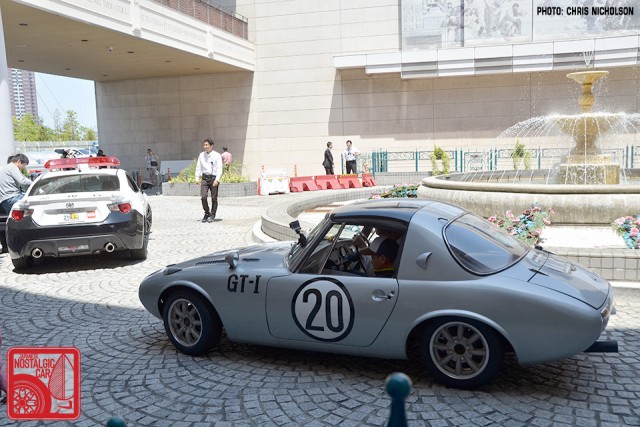
After the speeches were given, it was time for a bento lunch. During the lunch break, rides were given to some lucky folks. From the very loud vintage race car, to the normal thrum of a stock example and the silence of the electric conversion, there was something for everyone. You could even ride in the parade leader, a life-sized version of a Tomica police-spec 86.
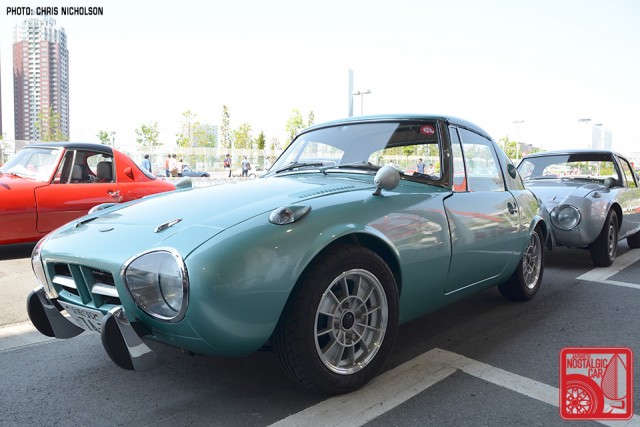
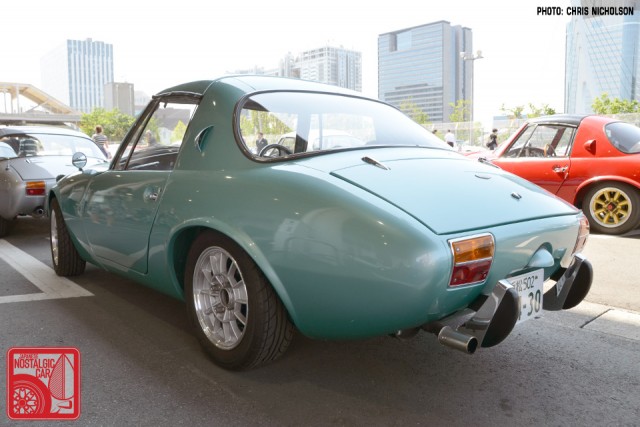
During the post-lunch stroll, I was stopped in my tracks by this fine example resplendent in metallic mint green. Don’t know how I missed this car during registration, but it suddenly stood out like Audrey Hepburn in a Givenchy dress.
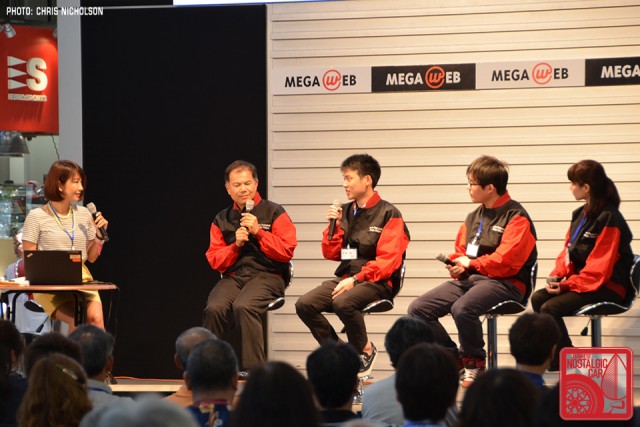
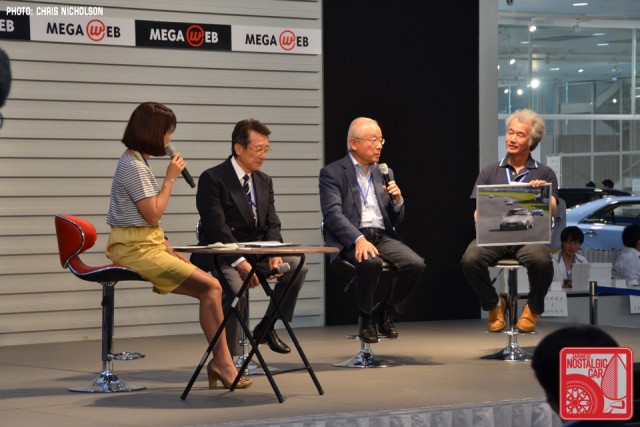
Among the afternoon interviews were the tech college team behind the electric Yotahachi and the gentlemen behind the original Sports 800 race teams. At one point, they discussed the car which won the GT-1 class at Fuji in 1965, and the officially authorized replica built by Dohi-san.
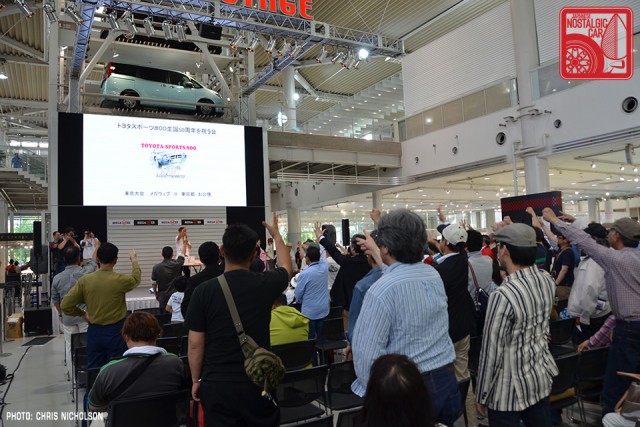
After the interviews, it was time for autographs and door prizes. I was surprised when the winners were decided by a big game of jan-ken. But then I remembered a friend who lived in Japan for several years once said that everything there is decided by jan-ken. Including all legislation in the Diet. He might have been exaggerating.
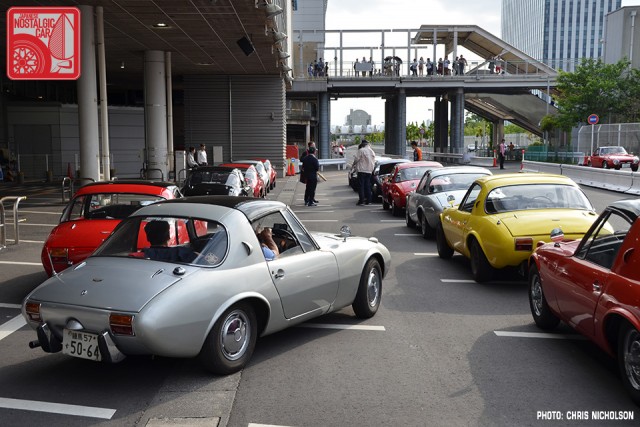
The last item on the agenda was the obligatory group photo of all participants, followed by the sound of flat-twins echoing around MegaWeb’s buildings one last time. For me, it was time to thank Sugiyama-san and say my goodbyes. With my friends from Adachi-ku helping me carry bags of souvenirs, it was time to find the nearest public transportation station and head back to the house.
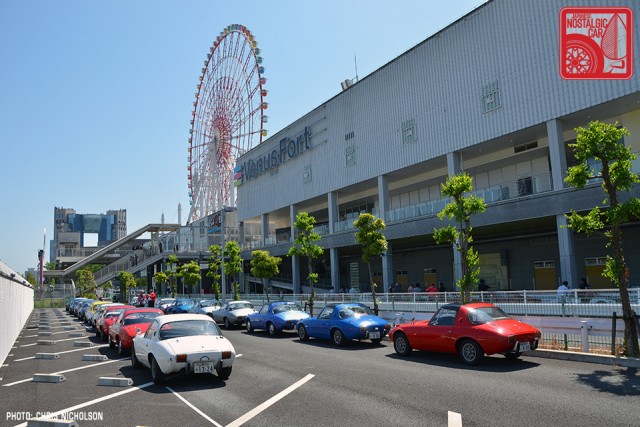
Despite my lengthy report, it is difficult to describe the experience of those two days. It was wonderful meeting so many fellow enthusiasts, and it was an honor to represent not just the museum where I work, but also the Sports 800 owners in America. My heartfelt gratitude to everyone who organized and attended this fantastic event. See you at the next anniversary.
In case you missed it, here’s Day 01 of the Toyota Sports 800 50th Anniversary celebration and bonus photos below.
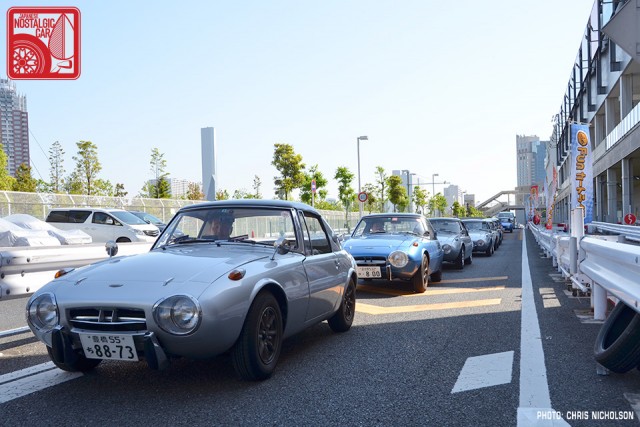
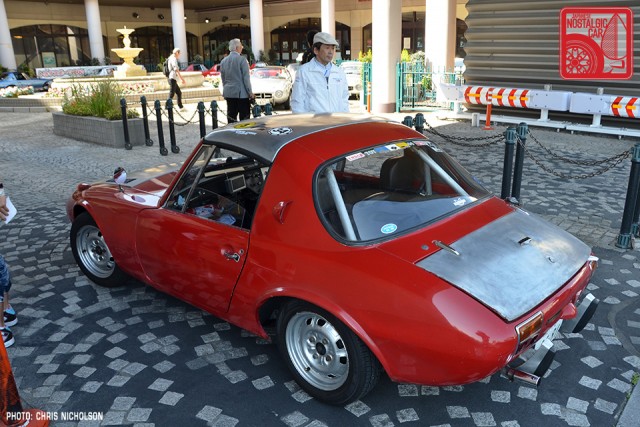
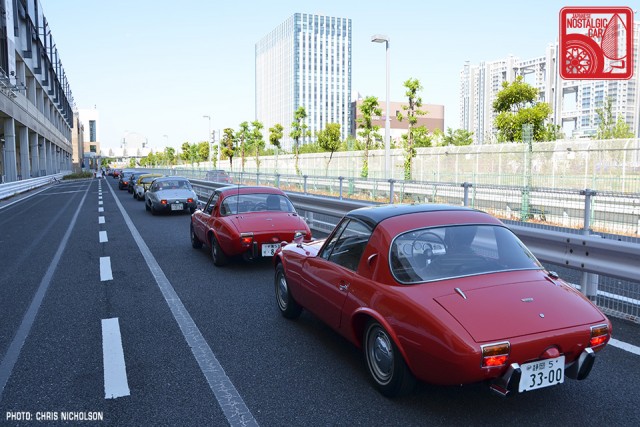
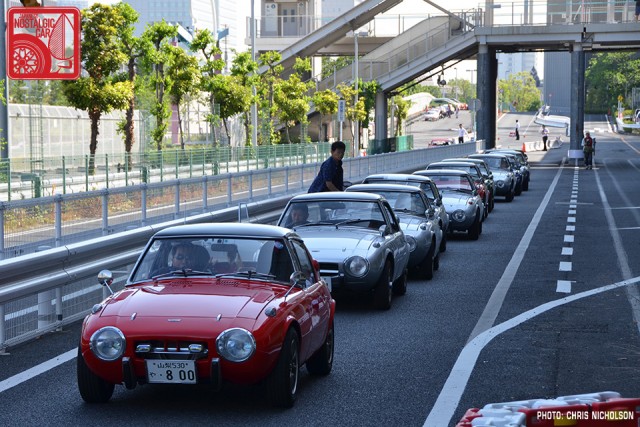
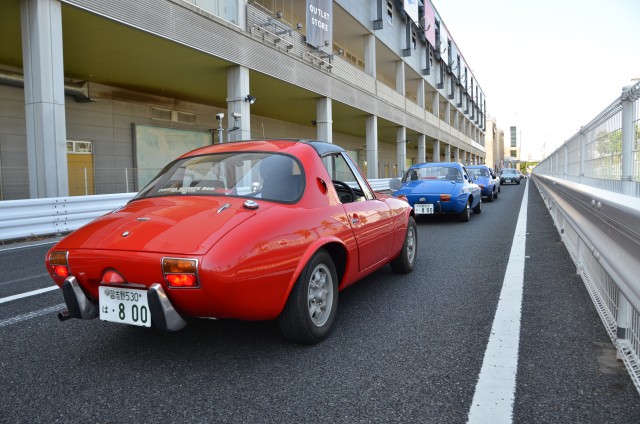
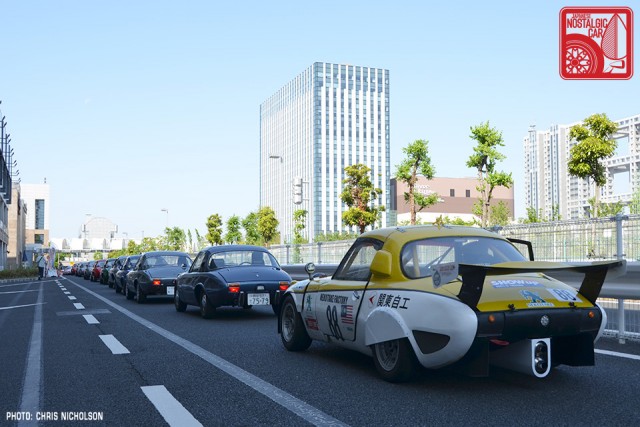
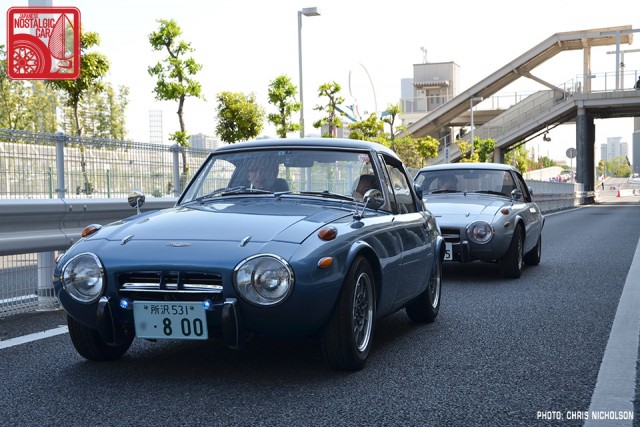
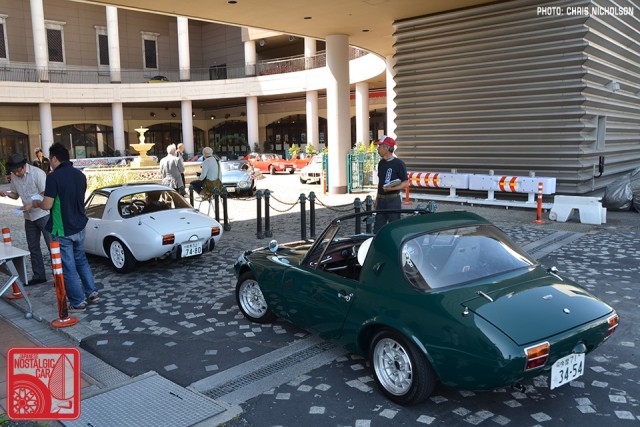

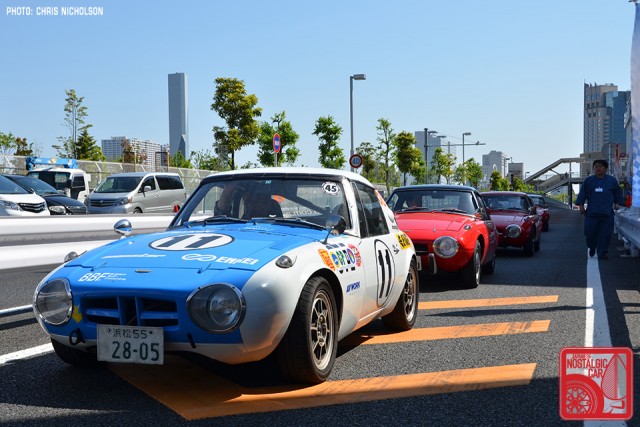
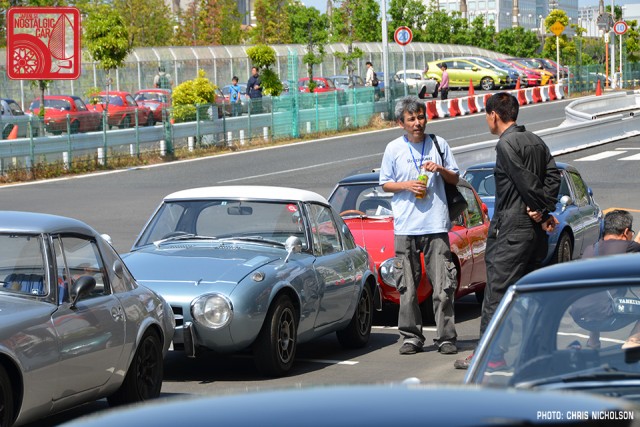
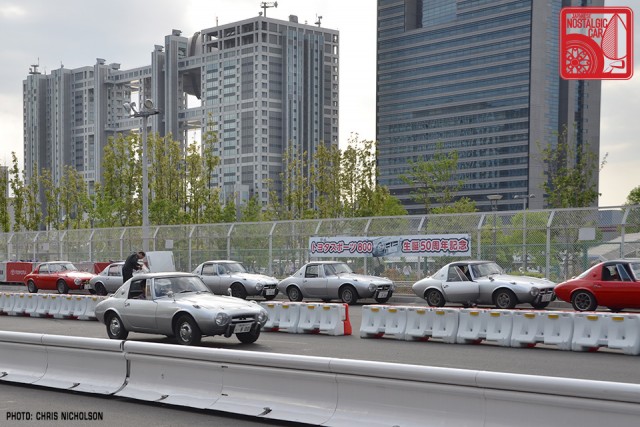
Chris Nicholson keeps the cars running at the Lane Motor Museum and is founder of YouShouldVisitJapan.com.


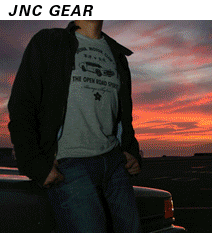
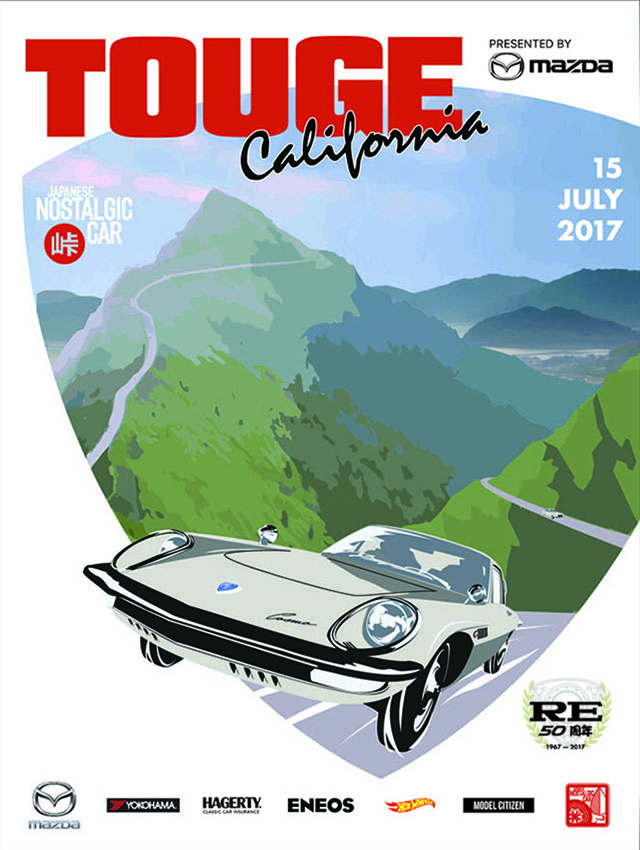
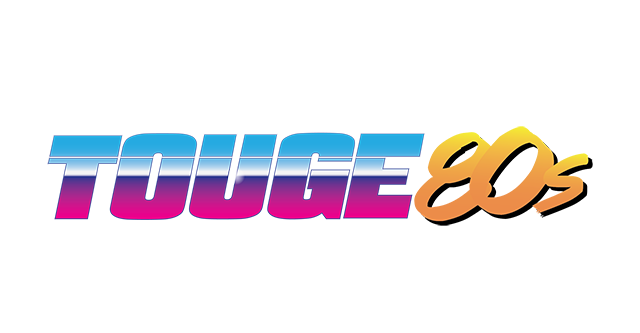
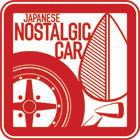
I think your friend is right about jan-ken, it is a national short-cut for everything. And onsens are awesome.
Now try explaining the mystery of kancho to the non-Japanese audience…
Yeah I’ll pass on that, thanks. 😀
Chris, thank you for this fantastic report.
This is one event I am truly sorry I missed.
Hopefully I’ll be around long enough to attend the 75th – marking my calendar now.
Thank you sir. Looking forward to seeing you there.
P.S.
For those interested, we will be holding a small 50th anniversary gathering at this year’s JCCS.
If you own a Sports 800 or know someone that does, please join in on the celebration. It may not rival the gatherings in Japan, but my hope is that it will be the largest gathering in the USA to date.
Is there a handful of these in the USA? I never see these.
There are probably between 30 to 40 in North America.
I wonder what the ratio is in the U.S., privately-owned vs. museum owned. Now where is my roster…
excellent coverage and pictures. It was nice to meet you at the museum a few weeks ago.
Thank you sir. It was good meeting you too. Come back anytime and bring friends!
So cute! I miss my 67′ lhd. My friend still harasses me for selling it some years ago